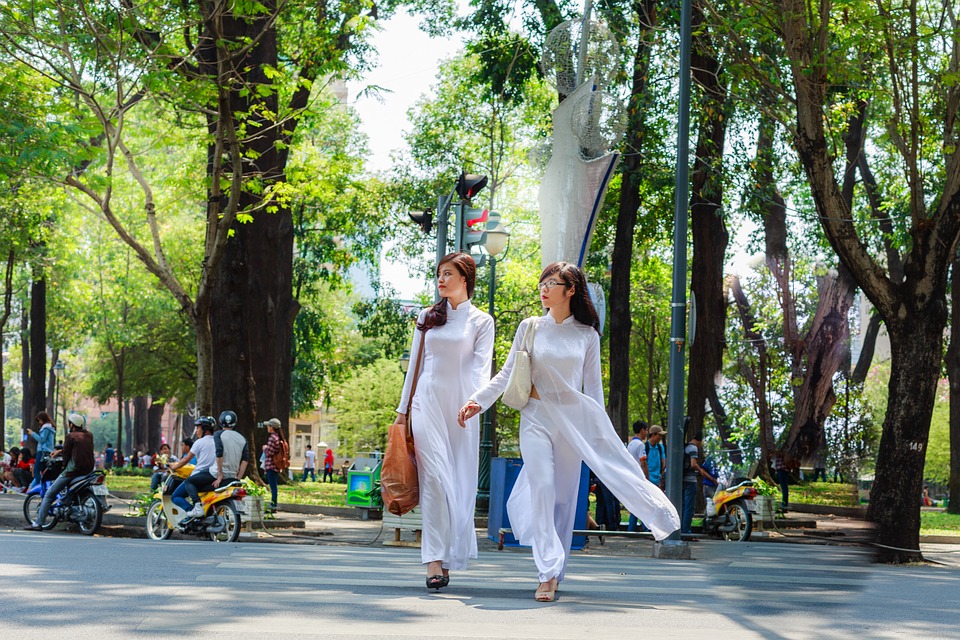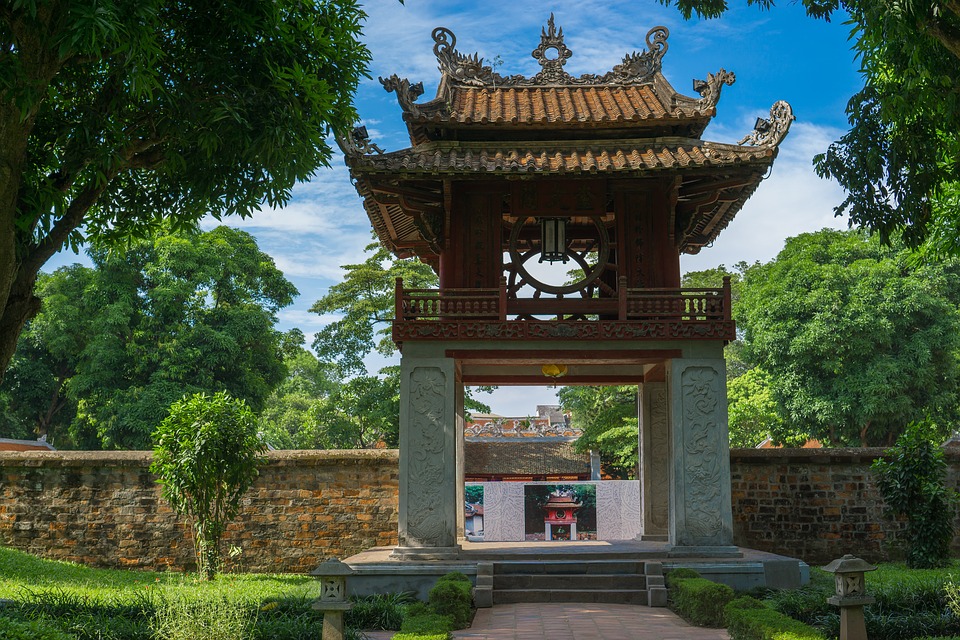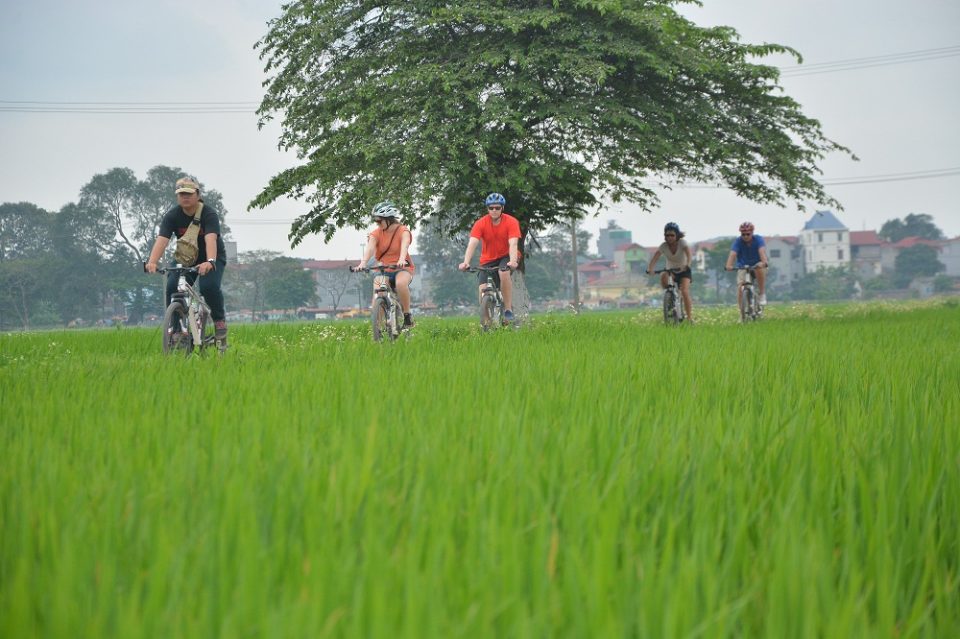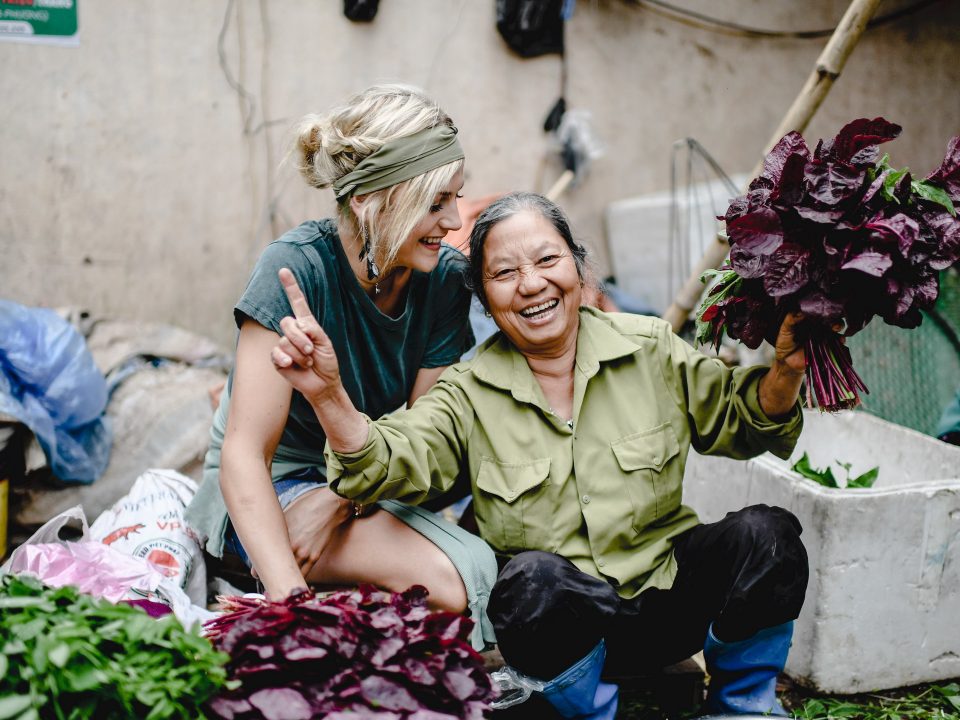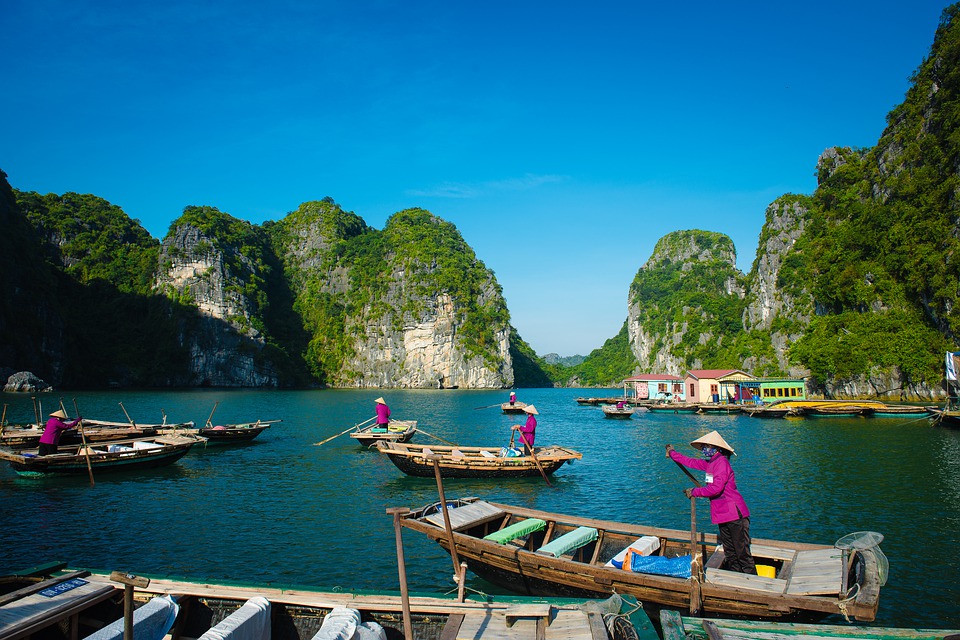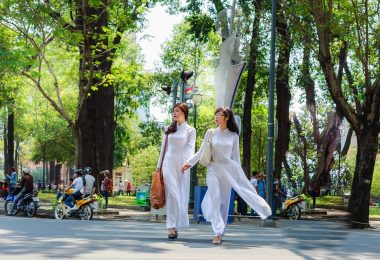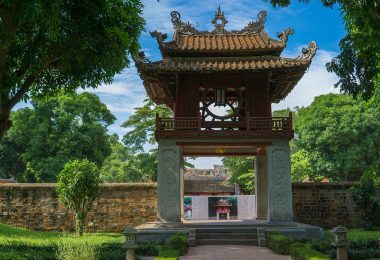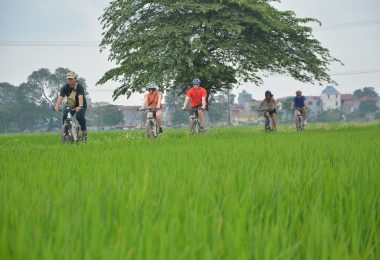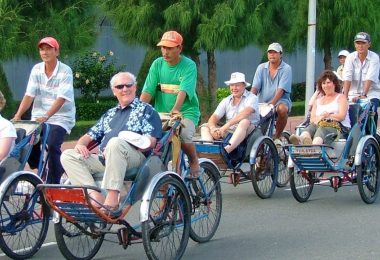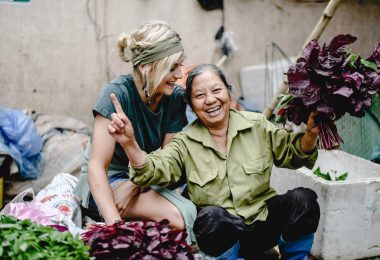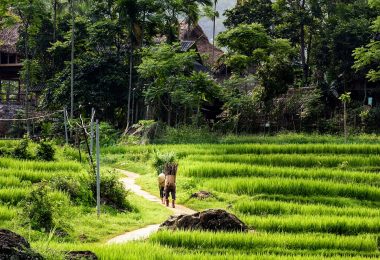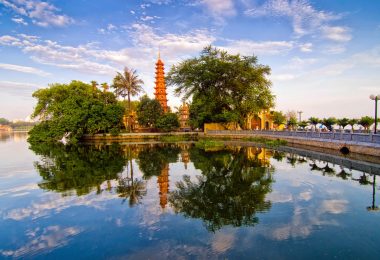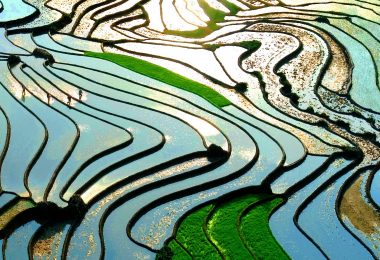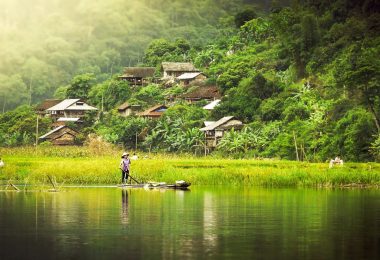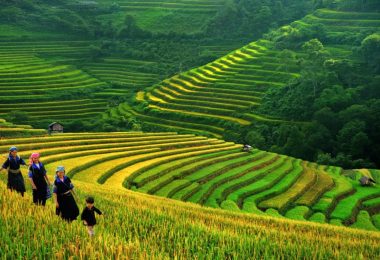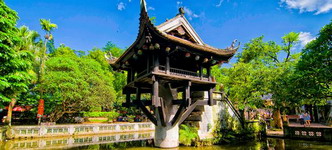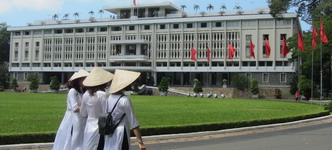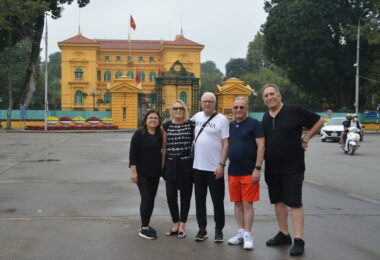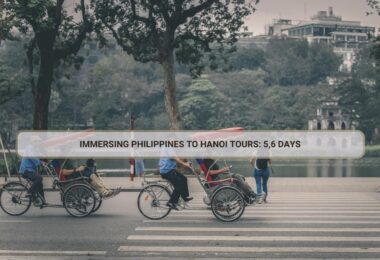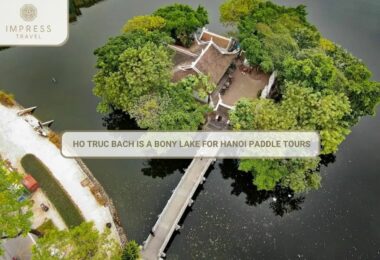Once we come to Vietnam, we cannot help but mention the precious rice grains associated with the rice growing activities of the Vietnamese people from past to present. To learn more about the tradition of wet rice growing in Hanoi as well as get ready for a tour of this traditional craft in Vietnam, read the article below.
History of rice cultivation development in Vietnam
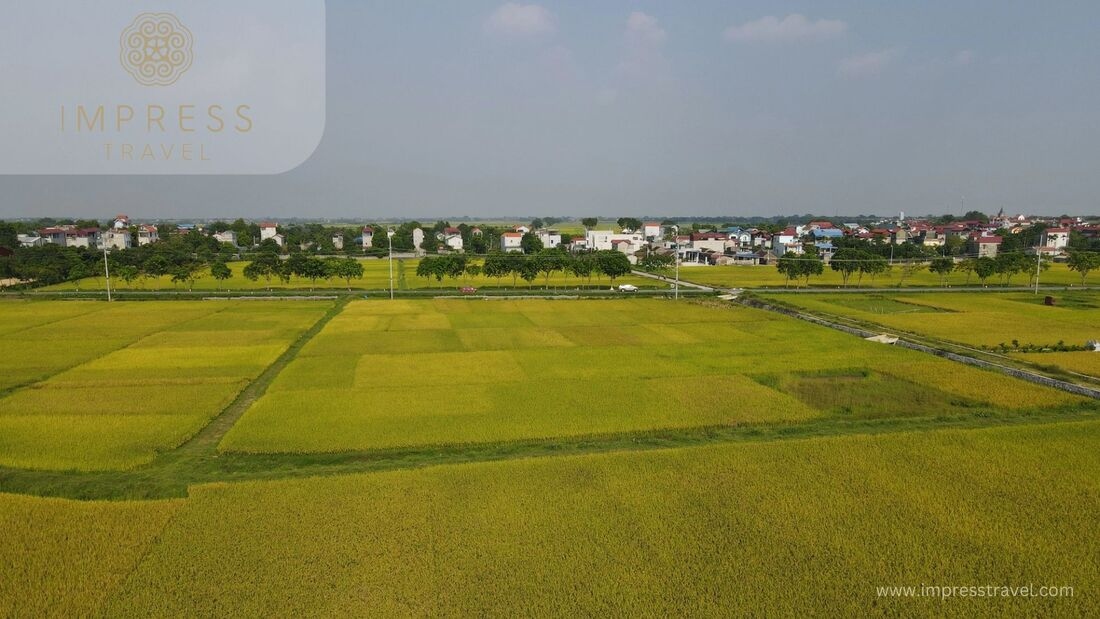
Rice fields in Hanoi
When talking about Vietnam, a Southeast Asian country, it is impossible not to mention the image of rice, one of the characteristics of the S-shaped land as well as one of the most solemn and traditional professions proud of the Vietnamese people. For many centuries, rice farming has always been one of the main occupations of the Vietnamese people as well as one of their livelihoods.
The image of the buffalo going first and the plow following has become extremely familiar to many Vietnamese people as well as international friends, so tourists come to Vietnam to experience and watch this activity. This traditional activity is also extremely numerous, turning rice farming into one of the activities that attract tourists in Vietnam.
Looking back at the journey of developing rice farming in Vietnam, it can be said that our ancestors have made enormous efforts to turn a wild plant variety into an huge economically effective variety for the whole country. Rice cultivation in Vietnam has a longer history than other Asian countries because according to archaeological documents from China, India, and Vietnam, rice has been present since 2000 – 3000 BC. Our ancestors successfully domesticated wild rice lines to become cultivated rice lines to achieve great agricultural achievements like today.
Information shows that before 1945, the rice growing area in the Northern and Southern Deltas were 1.8 million and 2.7 million hectares, respectively, with an average yield of 13 tons/ha. Rice at that time was calculated to be 2.4 – 3 million tons. During this time, old rice varieties were mainly used, which had low yields and were susceptible to disease and breakage, so people tried every plan and found every way to increase rice productivity.
Thanks to advances in science and technology as well as efforts to breed and develop new rice varieties by Vietnamese scientists, we have successfully bred and produced a number of short-growing spring rice varieties, short days to ensure the season. Thanks to the use of higher quality rice varieties as well as the application of other more effective production methods and structures, rice agriculture in Vietnam today has made great progress.
From 1979 to 1985, our country’s rice output increased from 11.8 to 15.9 million tons. The surplus amount of rice allows us to export it to friendly countries. Currently, we are the second largest rice exporting country in the world and a rice agricultural powerhouse.
Current situation of traditional rice growing in Hanoi
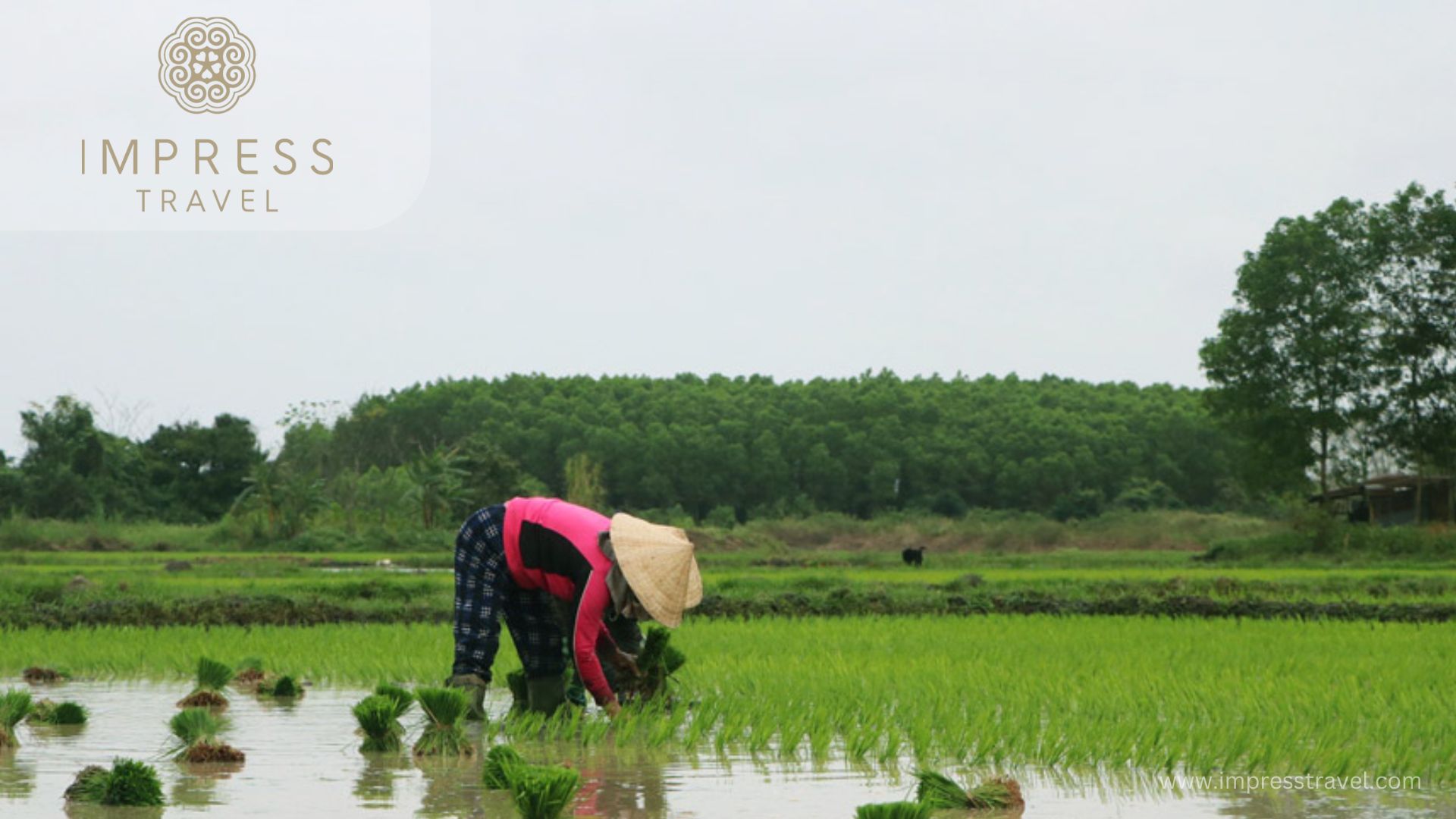
The farmer is planting rice
Once one of the provinces with the highest productivity and rice output in the Red River Delta, the rice granaries in Hanoi are extremely large and rich. Accumulated with alluvium from the nutrient-rich Red River, rice granaries in Hanoi are becoming increasingly large, playing an important role in helping develop the agricultural economy of the North in particular and the country in general.
However, due to the rapid development of industry and at the same time the process of industrialization and modernization at a dizzying speed, traditional rice cultivation no longer retains its key role as before. Since then, the area of rice cultivation land has also gradually decreased, the fact that traditional rice farming no longer retains its important role and the gradual loss of cultivated land area also makes many families and households that have been working in rice farming for many years struggling, forcing them to must transform and find new paths to adapt to the times.
However, with love for the profession and determination to preserve traditional culture as well as preserve one of the oldest professions of the nation, many households and families are still practicing rice farming, the majority in the region suburbs. Rice growing activities still take place extremely frequently and regularly, providing a stable source of income as well as development opportunities for many individuals and groups.
Even better, traditional rice farming today receives enormous support from state authorities as well as businesses, creating opportunities and cooperation possibilities for rice farmers. rice growing households in Hanoi in particular and Vietnam in general.
Opportunity to develop tourism combined with rice growing in Hanoi
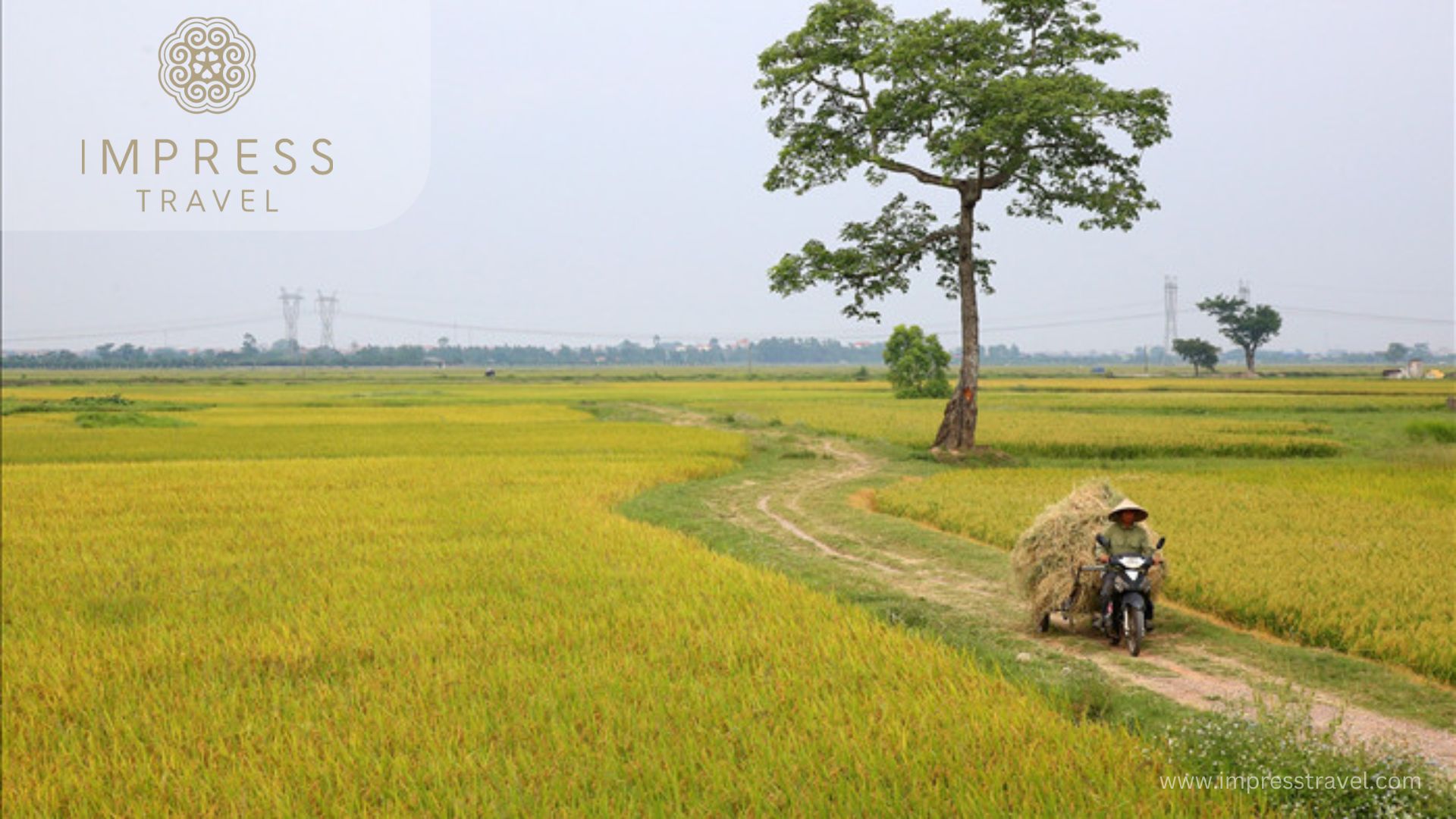
Rice fields in Ha Noi
As one of the characteristics of Vietnam in general and Hanoi in particular, recently, types of tourism combining sightseeing and rice growing experiences are very popular with many international tourists. Experience what it’s like to become farmers for a session, performing activities such as transplanting rice, sowing rice seedlings, and harvesting rice depending on the time they travel. It is the spiritual values and experiences that rice farming brings that are attractive dishes for diners, this both helps rice farming become more known to international friends as well as develop its reputation and develop local tourism activities.
Culinary journey about rice in Hanoi
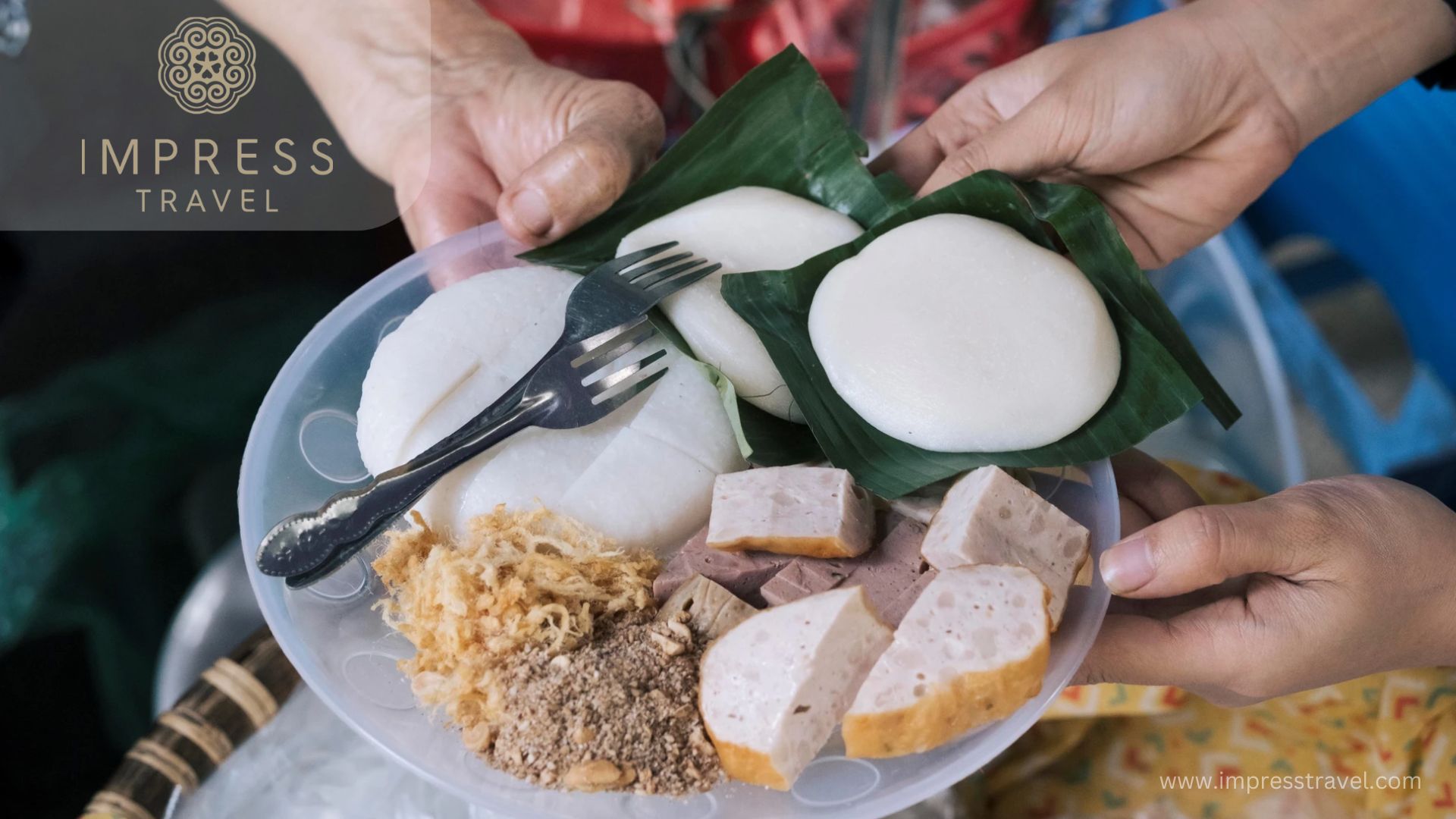
Hanoi’s rice balls
There is nothing left to discuss, this is a dish that you must definitely try when coming to Hanoi in particular and all provinces located in the territory of Vietnam in general because this is the dish that can be said to be delicious and appears on almost every daily tray of Vietnamese families. Eating white rice with accompanying sweet and salty dishes seems to be a tradition as well as a thousand-year-old habit of Vietnamese people to show respect and cherish the rice grains that our ancestors have built.
Cooking white rice is extremely simple because now there is an electric rice cooker to help you, but to taste the traditional white rice that our ancestors used to eat, rice cooked on a wood stove will be one of the top options if you want to fully enjoy the unique flavor. There are many restaurants in Hanoi that serve white rice cooked on a wood stove, so please hurry and enjoy it.
Banh chung – banh tet
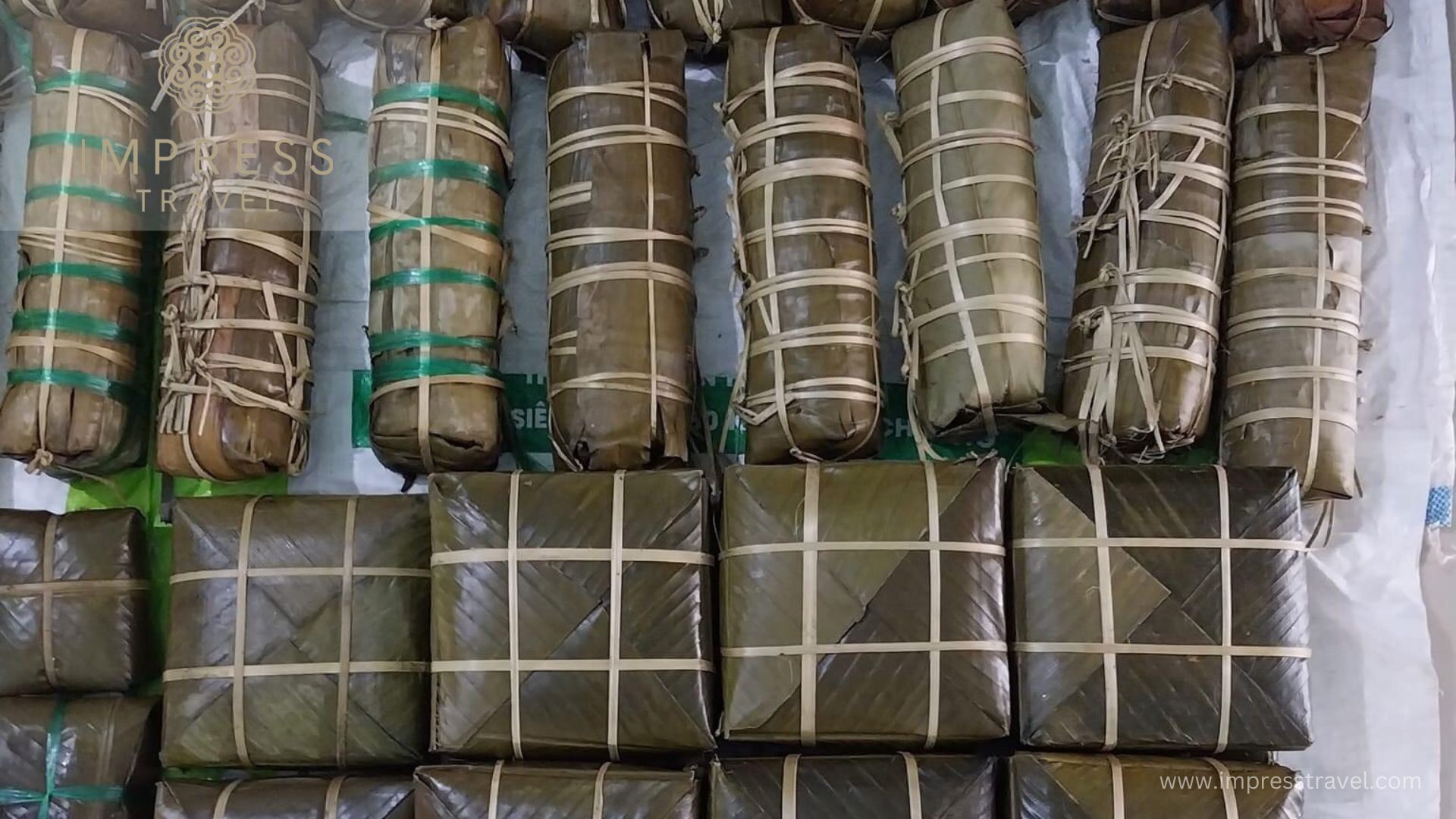
Banh chung – banh tet
Continuing to be one of the quintessential dishes of Vietnam, banh chung and banh tet are two dishes that appear extremely popular on holidays and lunar new year and are loved by many friends, both of cake has recognized around the world as the soul of Vietnamese rice. The flavor that these two cakes bring is extremely simple, but the process of making these cakes is the highlight and impression for everyone who experiences it, just a dish made from rice grains, but the flavor they bring can be said to be extremely familiar and familiar.
These two types of traditional cakes are also often used as extremely valuable gifts so that people can give them to relatives and friends. These types of cakes also have a very long shelf life, so you can You can buy it and slowly enjoy it.
Vietnamese fried rice
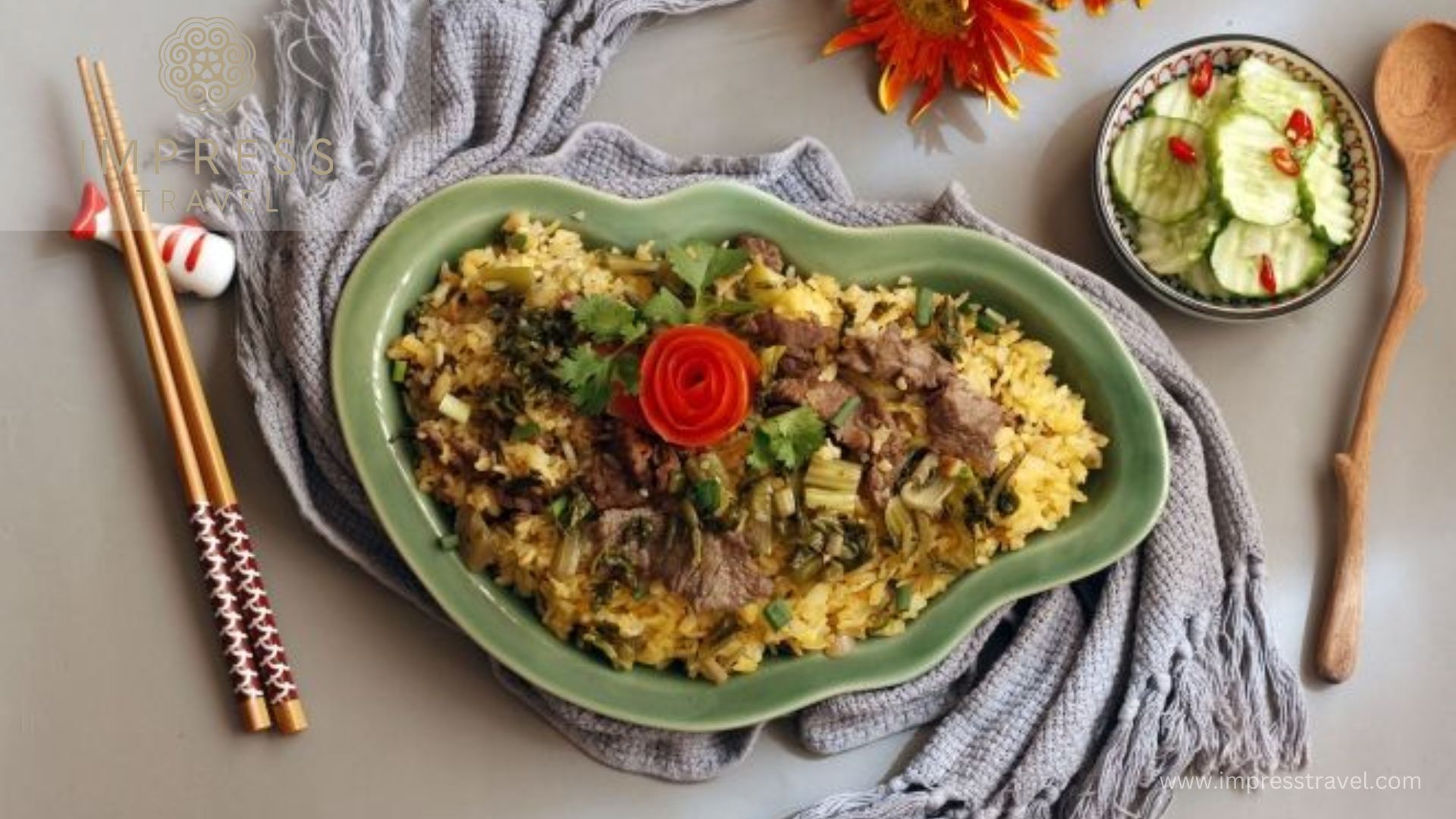
Vietnamese fried rice
Going around Hanoi, it will not be difficult for you to come across, stop in and enjoy delicious fried rice. Fried rice is a dish that can be said to be extremely unique and attractive to tourists, made from dried rice grains.
There are many types of fried rice that you can enjoy as well as many toppings that you can eat with fried rice such as chicken, eggs, sausage, pork, pork ribs,… Every type of fried rice will serve each group of customers with different needs, but the flavor of fried rice can be said to be unchanged and always retain its uniqueness over the years. So it would be a mistake if you miss fried rice when coming to Hanoi, Vietnam.
Pho, snail vermicelli, vermicelli noodles
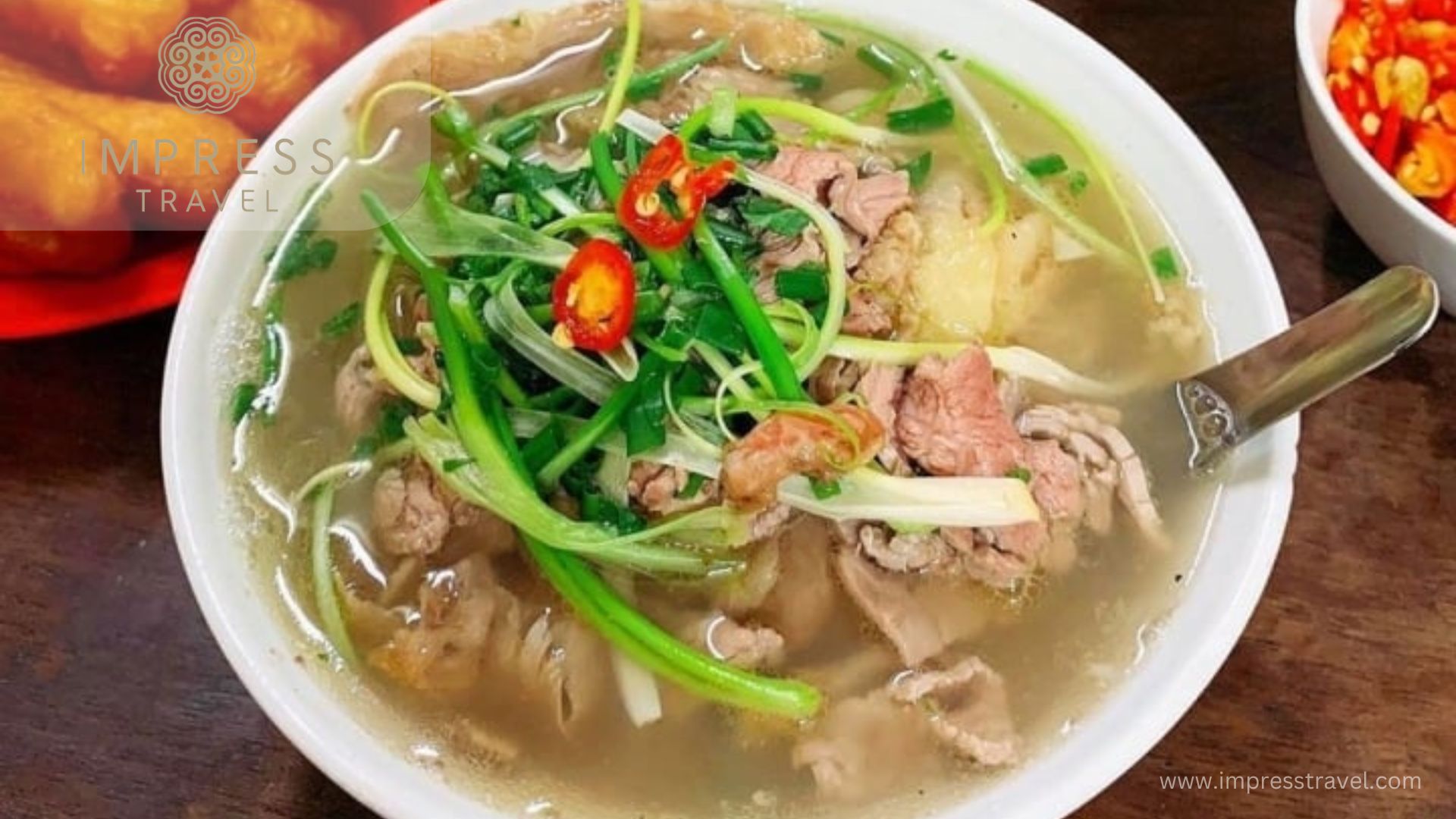
Pho Hanoi
These are all typical dishes of the capital and are extremely delicious dishes that also attract many tourists to experience. And the vermicelli in these dishes is also made from extremely delicious rice grains to create an overall complete and extremely famous dish.
It can be said that rice grains appear in every corner of Hanoi cuisine in particular and Vietnamese cuisine in general. The use of rice grains in cuisine is not only a simple form but also a metaphor for The intelligence and agility of our ancestors in knowing how to use rice grains for specific purposes is also a tribute to the gift that heaven and earth have given to the Vietnamese people.
Conclusion
Thus, through the above article, we have together discovered and learned about the origin of traditional rice growing activities as well as learned about the situation of this traditional profession in the capital Hanoi so that from there gain new and more respectful views of the rice grain and the soul in the branches of the Vietnamese people.
Don’t forget to follow and refer to our articles, Impress Travel for more information about attractive and famous tourist destinations as well as prepare yourself with a complete luggage for your own trip.







































